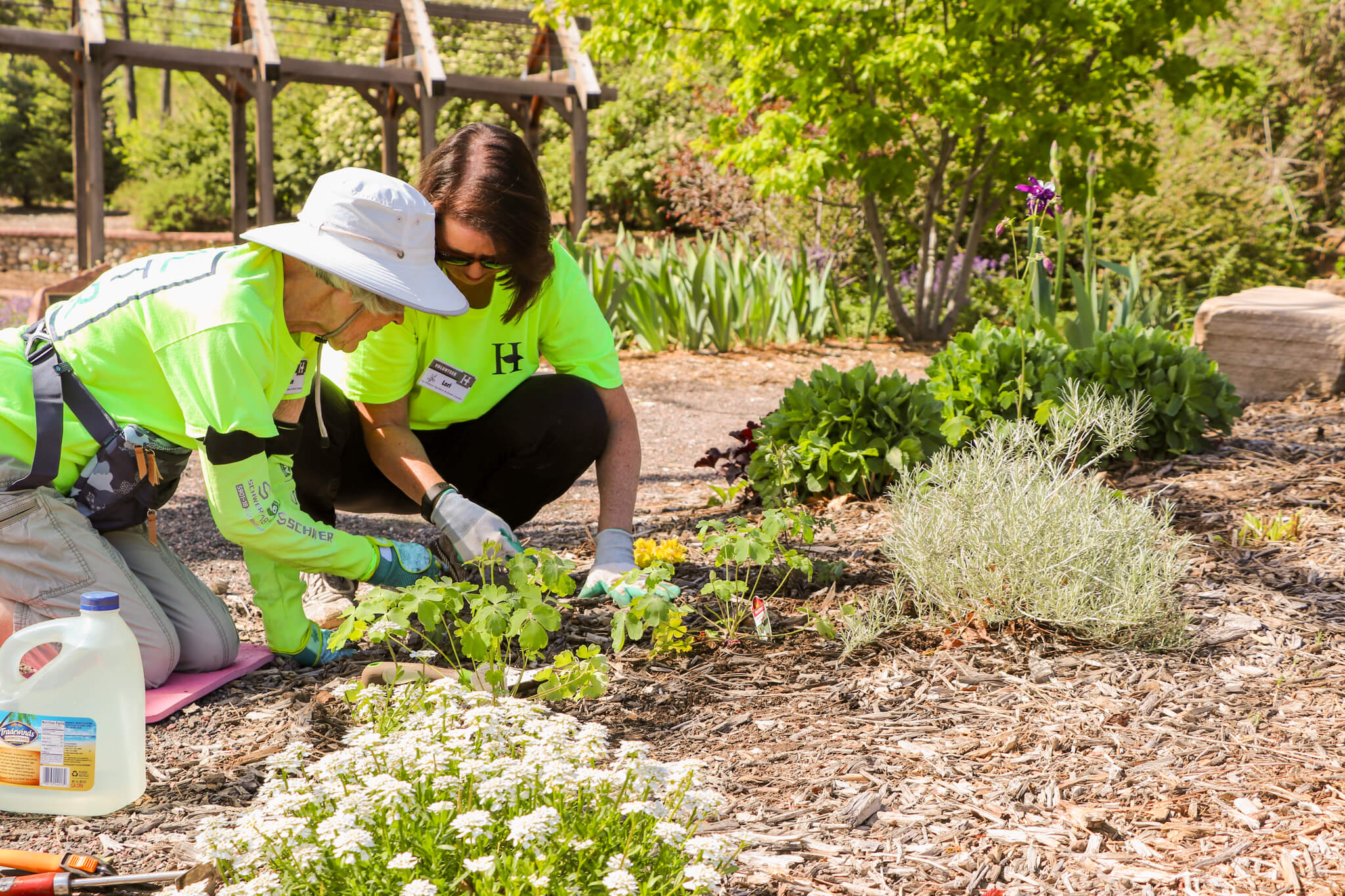The Colorado Garden features plants that grow well in the Colorado climate, specifically the Front Range area, highlighting those that are native, drought-resistant, colorful, and pollinator-friendly. lt was designed to inspire homeowners by demonstrating landscaping ideas that can accompany (or replace) traditional Kentucky bluegrass lawns to achieve these aims.
The garden has three main beds that not only provide multi-season visual appeal, but also utilize a wide variety of plants, incorporate hardscape elements that aid in the health of the plant material, and benefit bird and insect populations. Learn how you can mimic this landscape at home by exploring this outdoor classroom!
DESIGN FEATURES
General Design Elements
- Irrigation in each bed utilizes a drip-style system for optimal success and reduced water use.
- Preference was given to perennials that grow in dry and often harsh conditions.
- Microclimates were created by adding elevated berms and boulders of varying sizes.
- Landscape designs vary by bed and showcase different aspects of the Colorado environment that can be replicated in residential landscapes.
Native Bed (south side, near the building)
The native bed is designed to show how to use native plants for year-round visual appeal and drastically reduce water use and maintenance requirements. The space features:
- A wide variety of Colorado/regional native plants known for their drought-resistant, xeric nature. Native plant material requires little water and no fertilization once plants are established. These plants are more likely to resist pests and disease, and often have more hardy leaves and flowers that increase their likelihood of withstanding the extreme variations in Colorado weather.
- Native plant species are planted in groups to provide food for native
- pollinators including birds, native bees, and butterflies. Maintaining habitat for native insects is critical to sustaining bird populations, especially during nesting season. These plants also provide shelter for native insects. –
- The mulch used in this bed is called “squeegee” – a soil/pebble mixture suited for xeric plants. Fine gravel, such as pea gravel or squeegee, is preferred for mulching alpine and xeric plants like penstemons and cacti as they can rot with organic mulch like wood chips.
Northern Bed
The northern bed demonstrates how to use xeric plants to complement bluegrass lawn. By adjusting to a drip irrigation system in the beds, homeowners can add a rainbow of color while also reducing water use. The bed also features:
- Tall grasses, bushes, and perennials from the Plant Select® program.
- Plant varieties that demonstrate visual interest across multiple seasons.
- A dry streambed that captures roof runoff during heavy rains and provides visual appeal when dry.
Eastern Bed
The eastern bed demonstrates how to transform a flat landscape using hardscape and soil berms. This bed features:
- Berms and boulders that create microclimates for diverse plant material, which helps mitigate pest problems and disease.
- Perennials from the Plant Select® program.
- A variety of perennials and shrubs that are adapted to both partial sun and shady conditions.
- Plant material designed to attract hummingbirds (the northern portion of the bed).
PLANTS
The plants featured in the Colorado Garden are primarily available at local nurseries that specialize in native plants and sell Plant Select® varieties. Local and/or independent nurseries are often the best place to source plant material for home landscapes, as big box stores do not always carry plants tailored to the local climate.
Curious about the name of a plant in the Colorado Garden? Use a smartphone plant identification app to snap a photo and receive instant information or visit https://mailchi.mp/hudsongardens.org/colorado-garden for photos and additional details.
COLORADO’S CLIMATE
Understanding the local climate is critical when designing a landscape. In Colorado, bouts of heat, cold, drought, heavy rain, high winds and heavy snowfall are all common due to the state’s combination of high elevation, midlatitude, and interior continent geography. There are large seasonal swings in temperature and day-to-night changes.
In general, Colorado features a cool, dry, and invigorating climate. Humidity is generally low and the thin atmosphere allows for greater solar penetration resulting in pleasant daytime conditions even during the winter. Statewide average annual precipitation is 17″ but ranges from only 7″ in the San Luis Valley to over 60″ in some mountain locations. Differences in elevation and the orientation of mountain ranges and valleys can also profoundly affect the climate of local areas and wide variations can occur within short distances.
HISTORY OF THE COLORADO GARDEN
Three long-time volunteers, all certified Colorado Master Gardeners, Kandy Barry, Mark Lotspeich, and Sue Reams proposed, designed, and planted the Colorado Garden for all to enjoy. It was additionally supported with a generous donation from Alameda Wholesale Nursery.


